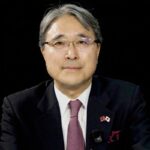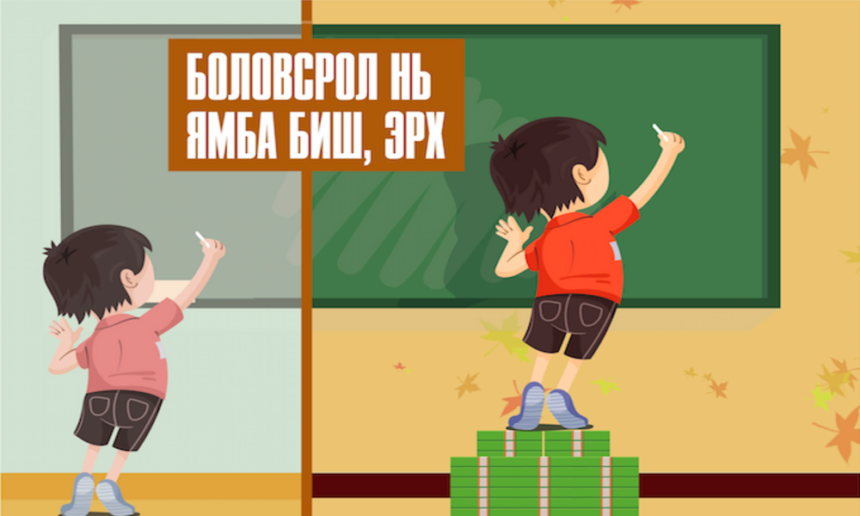It has been 25 years since the first ever private high school was founded in Mongolia. Currently, 7 per cent of pupils and 46 per cent of students go to private schools. If you look at the schools, 160 out of 803 high schools are private institutions, and so are 20 of 34 universities and 44 of 48 colleges.Education has become a significant business in Mongolia, and our education sector today cannot be fathomed without the role the private sector plays.
It is high time we – as a society – reflected on the consequences brought on by private education institutions, the future policy to pursue on education, and the overall understanding of why education matters and what it is for.
Public implications from private schools
The increasing number of private schools has meant a fiercer competition in the market, resulting in a wide variety of choices for customers. When picking a school, people have nearly as many choices as they would have when buying a consumer good. This is true anywhere in the country, especially in the capital city where one half of our population reside in.
The price of goods depends on their quality. Better schools mean dearer tuition fees. As of 2019, the annual tuition fees of private high schools range from 1 to 58 million MNT, with an average of 8 million MNT. In addition to high schools, we’re seeing an increasing number of private pre-schools and kindergartens.
Compared to public schools, the private schools have 2-3 times fewer students in one classroom, offer 2-10 times higher salary to teachers, have a native speaker give foreign language lessons, and have created an internationally competitive learning environment. As a result, they offer higher quality education, which allows graduates to be able to continue their learning journey in globally recognized higher education institutions.
However, there are only a few families who can afford to send their kids to these expensive private schools. Because of this, good quality education has become a privilege in Mongolia. At the same time, the public schools where most kids (~93 per cent) go to haven’t seen sufficient funding that could improve the quality of education. Despite the fact that Mongolia spends 12.4 per cent of its public budget (as of 2015), which is equivalent to 4.2 per cent of GDP, we’ve been unable to build enough schools, which is forcing schools to run three shifts in a day and accommodate 50 kids in one classroom.
This raises the question why private schools are allocated funding (variable costs) from the public budget, when the investment in public schools is clearly insufficient. In other countries, if private schools are provided funding from the public budget, they are given a tuition fee cap and are required to admit students as per specific residential constituencies. In Mongolia, there is a completely different scene. All higher-ranking government officials send their own kids and their grandchildren to private schools, and many of them have their own school or kindergarten. As a consequence of this influence and interest, a part of the already limited funding allocated on education has always gone to private schools.
It has even made its way into the law. Clause 41.1 of the Law on Education states that the source of funding for non-public education institutions will be made up of funding from owners, funding from the public budget as per the normative costs per student, tuition fees, donations, soft loans, and revenue from operations. The amount of public budget funding (variable costs) to be allocated to private schools must be renewed every year. However, it isn’t getting done properly. This begs the question who’s lobbying to keep it this way? Instead of aiming to provide education equally, the Ministry of Education, Culture, and Science is pursuing a policy that allows for different schemes, such as the Cambridge program and the laboratory school, which come with a higher pay for teachers and a different cost structure.
Private schools have been luring in the best teachers from public schools by offering higher salaries, either part time or full time. They are also admitting kids not only when their family can afford to pay the tuition fee, but also based on their talent. When going through the admission process, private schools don’t need to worry about residential constituencies as public schools do.
As an overall consequence, the difference between social classes is growing larger in Mongolia. Education has been turned into a profit seeking business and is driving the gap between the rich and the poor even wider and faster. Education can create a lasting difference between students, and more children have been observed discriminating each other based on what they can afford or not.
Also, having been given government subsidies based on their number of students, some private colleges and universities have been pushing their numbers too hard without focusing on the quality of education. As a result, many of their graduates are unable to find a job, and, even when they do, their competency level is proven insufficient. The number of unemployed people who hold a university diploma continues to grow, while we increasingly see more jobs that don’t require tertiary education as a qualification.
Policy on education
Currently, we are still under the impression that better marks mean greater return on education investment. However, it isn’t working the way this model suggests – if you learn everything as the program says, you will be able to improve your livelihood and get out of poverty. Private schools haven’t been reducing the poverty levels, but have been widening the inequality gap.
There are many different policies in other parts of the world. For example, Finland views that the purpose of education lies in reducing the inequality in society rather than producing star students and geniuses. In the 1980s, their education reform focused on ensuring a safe and healthy learning environment for kids. This meant providing free lunch for all student, helping kids keep healthy and fit, and enabling psychological advice and individual training sessions. It has helped Finland become a global leader in the PISA survey that comparatively measures the reading, mathematics, and natural sciences performance of 15-year-old students. South Korea and Singapore are also among the top performers in this survey. You can read more about why Finland has such strong education system in the article titled “Teacher development is National development”dedicated to the 7th conference of Mongolian teachers.
The purpose of education is to ensure social equality.
2019.05.09
Trans. by B.Amar












